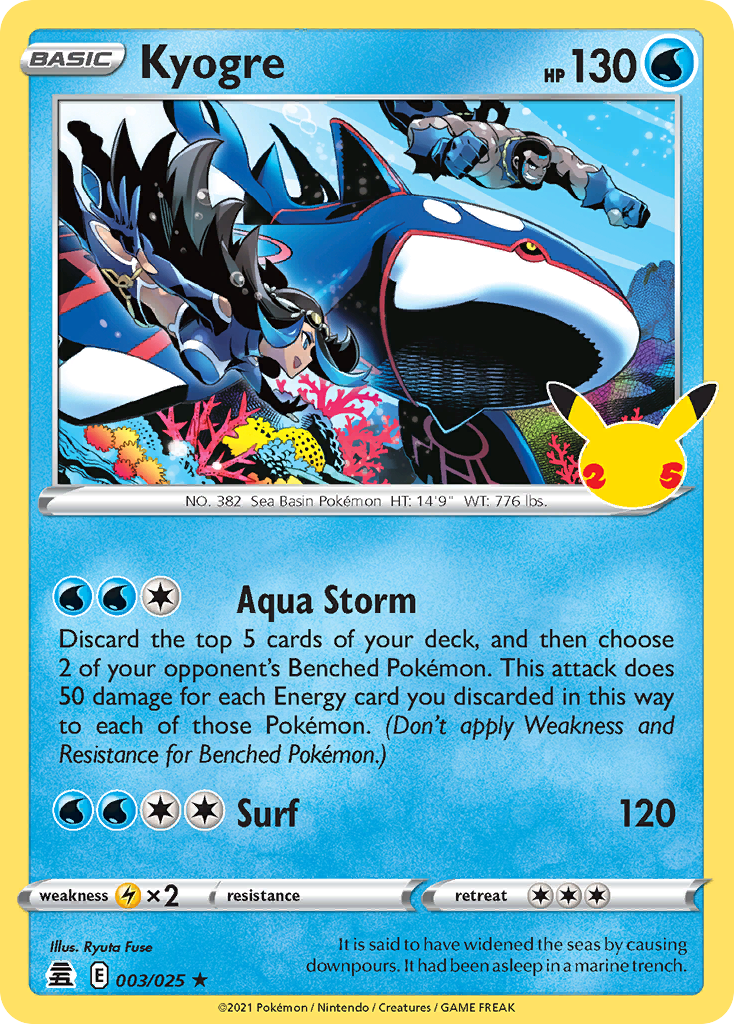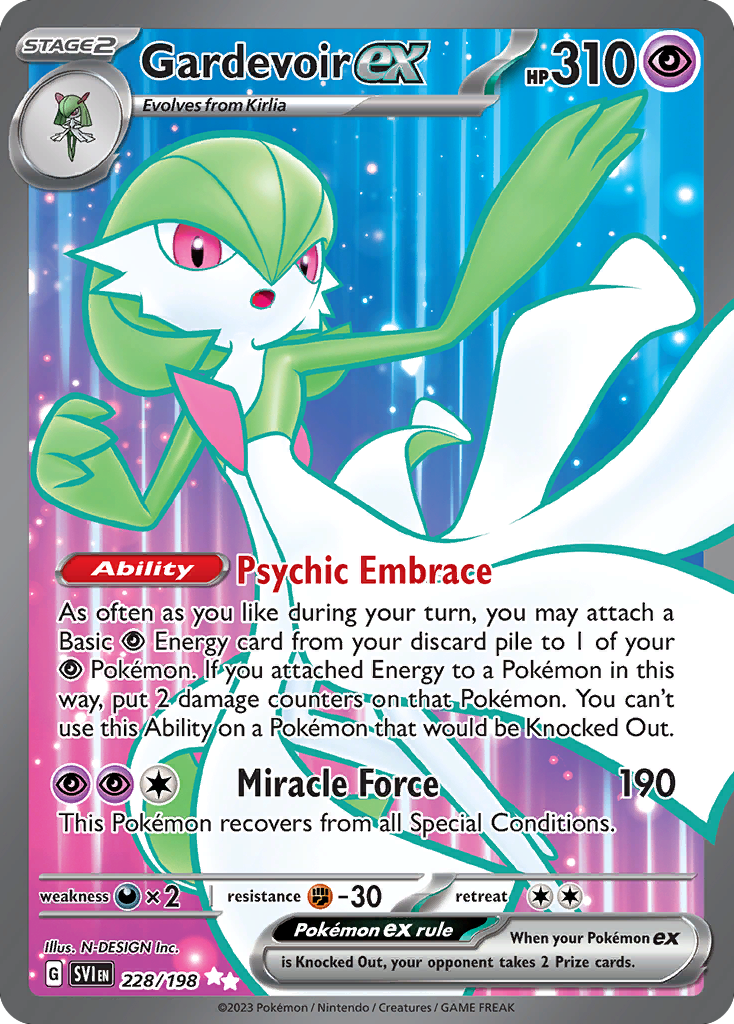Peoria Develops the Meta — Time to Turn to Lost Box
Hello everyone! Recently the Peoria Regional Championships concluded. It was a massive tournament with some interesting results. My group and I played Gardevoir ex, a deck that I wrote about recently. Gardevoir is an extremely strong deck, and one of the best things about it is that it doesn't have any truly bad matchups. Every deck feels like it is a decent matchup, and Gardevoir will usually win when it sets up. I had a strong start at 8-1-1, but then everything fell apart and I lost or tied my remaining rounds. No one from my group did well at this tournament, and I ended up with a lackluster Top 128 finish.
One of the biggest frustrations with Gardevoir ex was its inconsistency, and the fact that the deck is fairly high-maintenance. Gardevoir needs a string of things to go right for it to win a game, and there are so many things that can cause its game plan to fall apart. Of course, when I drew well, I clobbered many opponents and it felt great. On the other hand, I had some frustrating losses due to a variety of things going wrong. I could have played better in Day 2, but I don't think I made any egregious throws, nor could I have improved to a much stronger finish anyway.
Another problem is that Gardevoir ex is a very slow deck. Gardevoir's games involve significantly more actions than other decks, and it uses mostly single-Prize Pokemon. Furthermore, it is a deck that comes from behind, which means that neither player is inclined to concede games based on how they start. For these reasons, best-of-three matches involving Gardevoir nearly always use up the entire clock, with many of them resulting in a tie. This is true regardless of what deck the opponent is playing. I play faster than 90 percent of players I've encountered, and I don't want to compromise my integrity by changing my pace to what is "optimal" for a Gardevoir player based on the situation. This means that I just shouldn't play the deck.
Peoria Results
Peoria as a whole was similar to the Pittsburgh Regional Championships in that it was dominated by Lost Box and Miraidon ex. Lost Box, being a reasonably consistent deck with decent matchups, is what I should have played. It is no surprise to see Lost Box get first and second place. Kyogre is a broken attacker, and the Turbo build is probably the best overall deck in the game right now. Lost Box is fairly difficult to play, but it's no surprise to see skilled players bring out the best of it.
Miraidon ex continues is strong success, adapting to the Path to the Peak to help it against Charizard ex. Miraidon got stronger with the addition of Mew ex. One of my biggest complaints with Miraidon is its lack of a draw engine. After its initial explosion of setting up with its Tandem Unit Ability and hopefully a Supporter, it is left with basically nothing to sustain it. Mew ex's Restart Ability somewhat helps with this. Although it doesn't draw a ton of cards, it is better than nothing. This turns out to be very impactful when dealing with your opponent's late-game Iono disruption. Miraidon naturally thins Pokemon and Energy cards out of the deck, so drawing just a few cards with Restart will often give it some options after your opponent plays Iono. Furthermore, Mew ex offers an alternative attacking option. Unless you have two Flaaffy established, your opponent will see it coming, but this new Mew from 151 is a powerful enough card that it is still worth using.
Miraidon ex was a very popular deck, as it is extremely fast and powerful, all while being relatively brainless. It ended up in Top 4, Top 8, and Top 16. If Pittsburgh's results weren't enough to convince you to respect Miraidon and prepare for it, Peoria certainly should solidify that.
The biggest difference from Pittsburgh to Peoria was the explosion in popularity of the Darkness-type Charizard ex. Charizard was actually the most popular deck at the tournament. Although it did not make it into the Top 8, it got several Top 16 spots. I played against four of them, almost in a row, in Day 1. This huge spike in popularity proves that the American meta is indeed affected by smaller tournaments in other parts of the world. The recent Curitiba Regional Championships in Brazil was dominated by the new Arven build of Charizard, and this influenced many players to pick up the deck for Peoria. Personally, I have run into some consistency issues when playing the deck. This is the nature of high-maintenance Stage-2 decks. I would say it is comparable to Gardevoir ex in terms of consistency, even though the two decks have drastically different engines and styles of play.
Another interesting development is Mew VMAX deck lists switching back to the pure Double Turbo Energy build, forgoing the whole Fusion Strike Energy package. The reason for this is so the deck can focus on continuously disrupting the opponent. Aside from the usual Path to the Peak and Judge, the deck now plays Grabber and Luxray V for a more effective hand lock. This is a very cool and interesting build, though I'm sure it is miserable to play against. DTE Mew is generally more consistent than Fusion Mew, but with worse matchups. However, the hand lock combo gives it a better chance against Charizard specifically, which was a necessary meta development for Mew. In addition, the lock can give you many cheesy wins over the course of a tournament. Even if the lock fails, it is still a powerful Mew VMAX deck that deals tons of damage very quickly and has an unparalleled consistency engine. This deck got Top 4, Top 16, and saw several other Day 2 placements.
Another deck in Top 8 was an interesting Sableye / Radiant Charizard deck. I still don't think this deck is very good, but at the very least it was good enough to make Top 8. This was definitely the most unique deck in Top 8, as it included unusual cards such as Ditto, Articuno, and Spiritomb. I am happy to see these cards do well because I think they are cool. However, I think this list struggles to take advantage of Radiant Charizard's strengths as it does not include Cross Switcher, Magma Basin, or Mirage Gate, as well as only one copy of Boss's Orders. Thus, the Radiant Charizard usage is heavily restricted.
Rounding out the Top 8 at Peoria was a completely normal Chien-Pao ex list and a slightly offbeat Gardevoir ex list. Chien-Pao is a very luck-based deck that tries to high roll to win, and it has a ridiculous power level. With enough Chein-Pao representation, it is almost inevitable that one of them will hit the RNG lottery and make it into the Top 8. That said, Grant Shen is a skilled player who can most optimally take advantage of Chien-Pao's upsides, so it is no surprise to see him placed among the best eight players of the tournament.
The Top 8 Gardevoir ex list looks atrociously terrible at first glance, but Australia's Brent Tonisson is a very consistent and skilled player, and he did much better with Gardevoir than I did at this event. He probably knows something I don't, which made me want to take a closer look at the deck list. But after doing so, I still think it looks bad, so I will have to try it out myself. After several negative experiences with playing Gardevoir, the archetype has left a bitter taste in my mouth.
The main thing that I like about the Top 8 Gardevoir ex list is the maxed out counts of the search cards. This should increase the consistency of setting up multiple Kirlia quickly, which of course leads to drawing more cards. In exchange, the list foregoes the package of Lumineon V, Professor's Research, and Forest Seal Stone. I really enjoyed those cards that allow for explosive turns, and they increase consistency as well. It is possible that Brent's version is better, but who knows? This list also plays just two Rare Candy, so it really focuses more on getting your Kirlia setup. Even without Lumineon V, there are still two copies of Collapsed Stadium. This seems unnecessary to me. I normally just use Collapsed Stadium to remove Lumineon anyway. The other uses for it are cool, but don't come up very often. The inclusion of Mew ex doesn't make that much sense to me. It seems it is best as a surprise against other decks with Radiant Greninja. Perhaps Gardevoir takes advantage of surprise cards more, since it doesn't finish entire best-of-three sets. Therefore, even getting just one cheese win has more value than normal.
There is a complete lack of Lost Vacuum, Pal Pad, and Artazon, giving the deck fewer overall Path to the Peak counters. However, with increased counts of Iono and Worker (with no Professor's Research), Pal Pad won't be needed as often.
The final thing of note from Peoria is the lack of Giratina VSTAR. Giratina was the number one most popular deck at Pittsburgh, yet it was not even among the top 5 most popular played decks at Peoria. This is especially surprising because of all of the Charizard hype. Giratina looked to be poised well for the tournament because it matches up well against Charizard. There were some Giratina in Day 2, but no real notable results from it. As a side note, Lugia VSTAR was very popular but had lackluster results, with zero in the top 16. I think Lugia is bad in the current meta, as it gets trounced by Charizard ex and Miraidon ex.
This concludes the public portion of this article.
If you'd like to continue reading, consider purchasing a PokeBeach premium membership! If you're not completely satisfied with your membership, you can request a full refund within 30 days.
Each week we post high-quality content from some of the game's top players. Our article program isn't a corporate operation, advertising front, or for-profit business. We set our prices so that we can pay the game's top players to write the best content for our subscribers. Each article topic is carefully selected, goes through multiple drafts, and is touched up by our editors. We take great pride in our program!



